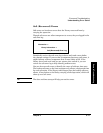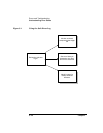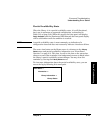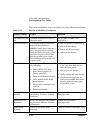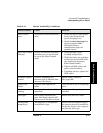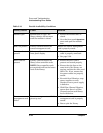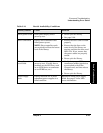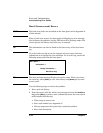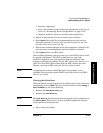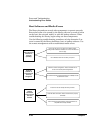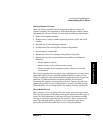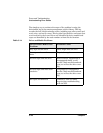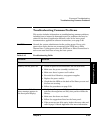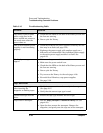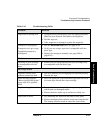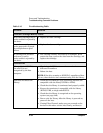
Chapter 5 5-25
Errors and Troubleshooting
Understanding Error States
Errors and Troubleshooting
Errors & Troubleshooting
• Recovery suggestions
• Error code qualifier that provides more information on the type of
error (see “Interpreting Error Code Qualifiers” on page A-14)
• Sequence numbers, which are used for factory diagnostics
3. Record all information from this screen for later reference.
4. Select
[More]. Record the list of recommendations on this and any
subsequent screens. To retrieve this information after you exit, view
the latest entry in the hard error log.
5. Perform the recommendations in the order presented. Continue with
each successive recommendation until the problem is isolated.
6. Select
[More]. Note any FRUs listed.
When a failing assembly causes an error, up to three FRUs can be listed
for possible replacement. The FRU replacement list, error code
qualifiers, diagnostic tests, and sequence numbers should be used
together to identify the problem. Use the FRU replacement list only as a
guide. The first FRU listed is most likely the FRU causing the error.
Replace a subsequent FRU only after the first has been tested.
NOTE If replacing the second or third FRU repairs the problem, test to
establish that previously replaced FRUs were faulty. Return the FRUs
that are not needed.
Clearing the Failed State
When the library records a hard error, the library status icon in the front
panel display is set to
Failed. This state can be cleared (to either Healthy or
Partly Available) by one of the following:
• Running the Recalibrate Library test
• Running the
Clear Hard Log
NOTE The Clear Hard Log function clears the error log and is only available from
the
Service Menu. Ensure that you have recorded information from the
error log before running this test.
• Power cycling the library



